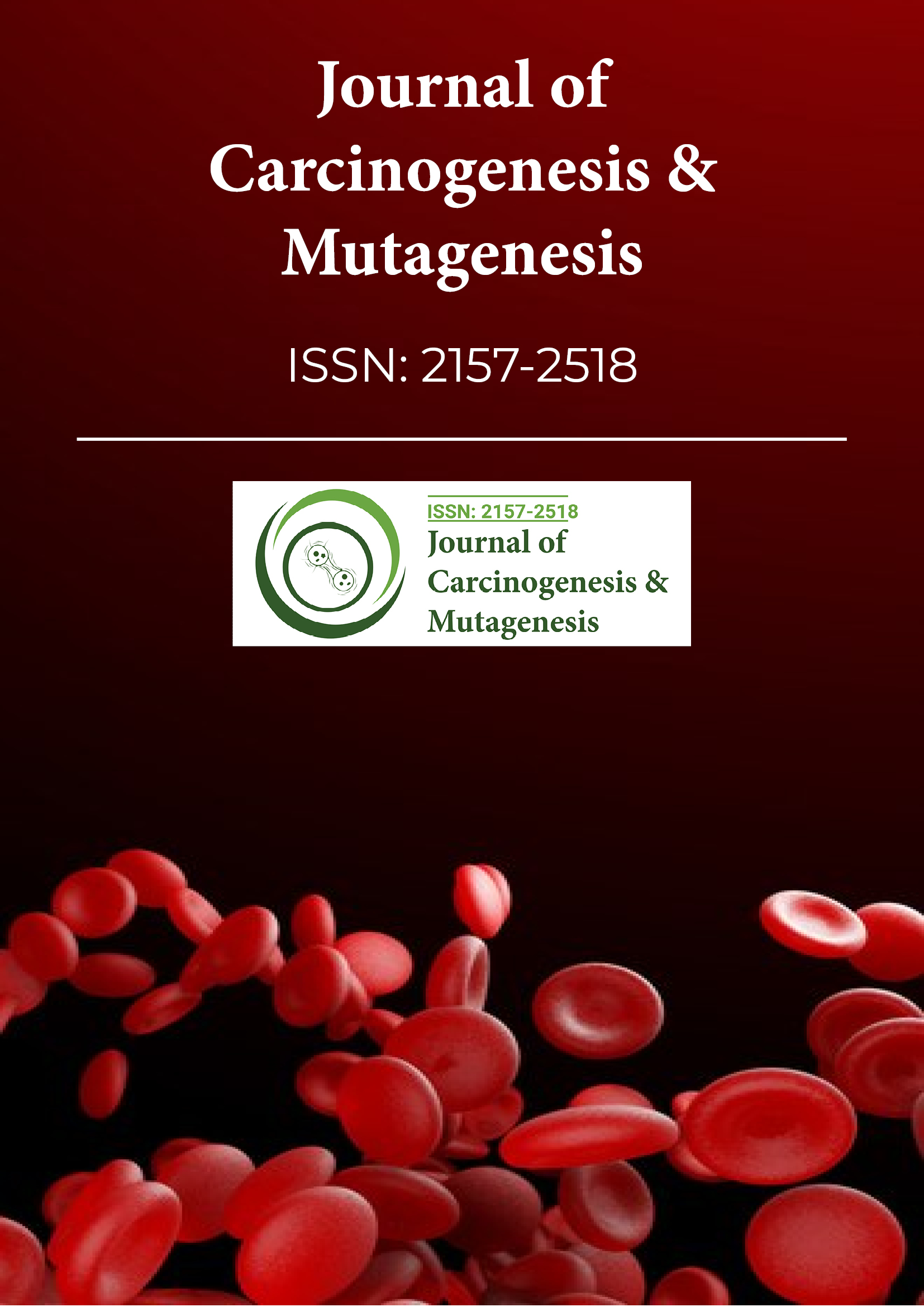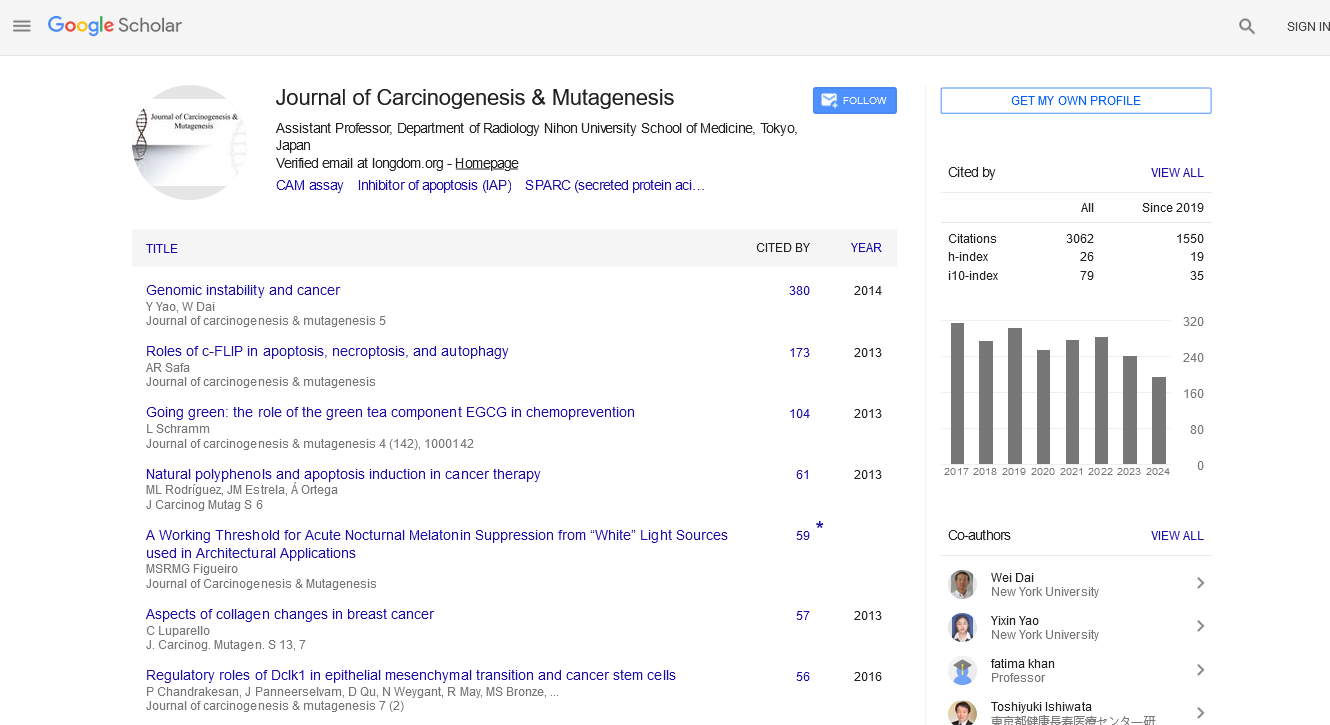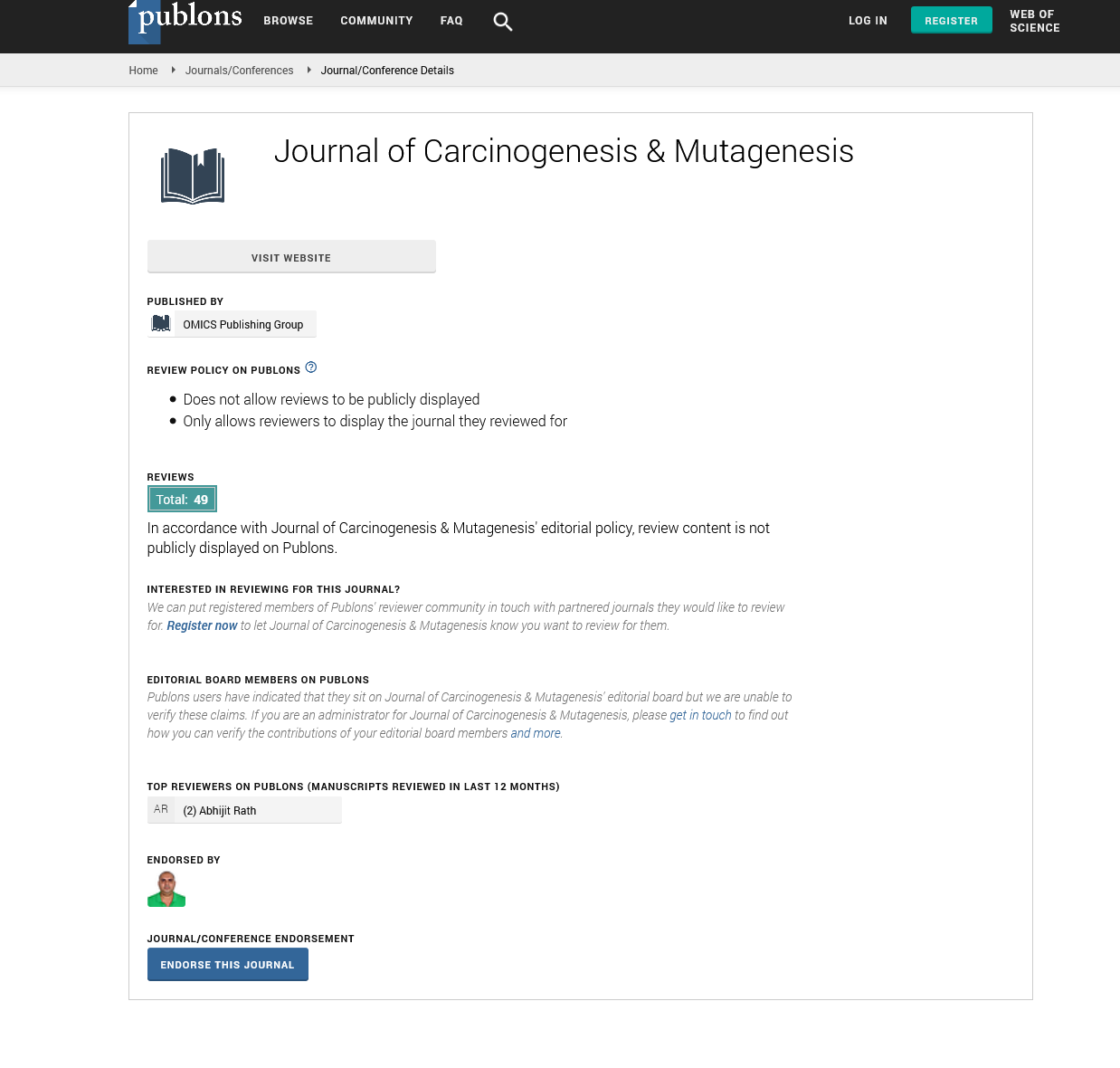PMC/PubMed Indexed Articles
Indexed In
- Open J Gate
- Genamics JournalSeek
- JournalTOCs
- Ulrich's Periodicals Directory
- RefSeek
- Hamdard University
- EBSCO A-Z
- OCLC- WorldCat
- Publons
- Geneva Foundation for Medical Education and Research
- Euro Pub
- Google Scholar
Useful Links
Share This Page
Journal Flyer

Open Access Journals
- Agri and Aquaculture
- Biochemistry
- Bioinformatics & Systems Biology
- Business & Management
- Chemistry
- Clinical Sciences
- Engineering
- Food & Nutrition
- General Science
- Genetics & Molecular Biology
- Immunology & Microbiology
- Medical Sciences
- Neuroscience & Psychology
- Nursing & Health Care
- Pharmaceutical Sciences
Abstract
A Mouse Model for Barrett’s Esophagus: Surgery and Histology
Taddei A, Lottini T, Fazi M, Ringressi MN, Lastraioli E, Bechi P and Arcangeli A
Purpose: Barrett’s esophagus (BE) is the sole precursor lesion of esophageal adenocarcinoma (EA) identified so far. The progression towards EA is estimated to affect 2 to 10% of BE patients, hence endoscopic surveillance of at-risk subjects is mandatory. Surveillance endoscopic procedures imply high cost, discomfort and risks for the patient, as well as the non-infrequent missing of small, focal lesions signaling progression to EA. Hence, it is important to search for new potential markers to better identify BE patients at risk of EA progression. The aim of this study was to produce a mouse model of BE, suitable for further molecular and genetic analyses.
Methods: Forty-four CD1 mice were operated upon by means of an esophago-jejunal anastomosis. Five CD1 mice underwent a sham operation. The animals were sacrificed 10 months later and histological analysis was performed with Hematoxylin & Eosin and Alcian Blue staining.
Results: The overall postoperative mortality rate was 11%. Of the 39 operated animals 14% developed histologically detectable intestinal metaplasia in the lower esophagus. No histologically detectable lesions were shown in the sham group.
Conclusions: The mice model we propose could be applied because of its technical feasibility and acceptable mortality and can be used in transgenic mice too, in order to better understand molecular progression from BE to esophageal adenocarcinoma.


